Have you ever looked at your life’s biggest challenges and felt like you’re staring up at Mount Everest? Well, welcome to “The Mountain is You” – a book that’s not about hiking gear or trail mix, but about tackling those personal mountains we all have.
You know, the mountains made of our own fears, insecurities, bad habits, and that nagging feeling of not living up to our full potential.
Imagine this: inside each of us, there’s a real battle going on. It’s a clash between two powerful forces: what we consciously want, and the hidden, unconscious resistance holding us back. When these forces collide, they create our inner struggles – just like real mountains are formed by giant underground tectonic plates grinding against each other.
But here’s the positive twist: your mountain is not just an obstacle; it’s also your golden ticket to becoming the strongest version of yourself. When we face that which blocks us from the life we desire, then we evolve and level up.
As Brianna Wiest brilliantly puts it, one day this mountain will be behind you, but the transformation you undergo in the process of climbing it – that’s yours to keep forever. So it’s not really about conquering the mountain, but mastering yourself.
Who is the author?
Brianna Wiest is a writer and author, best known for her work on emotional intelligence and self-development, that often combine philosophical concepts with practical advice. She has written multiple bestselling books, including “The Mountain is You” and “101 Essays That Will Change The Way You Think.” Her articles are frequently featured on popular platforms like Thought Catalog and Medium.
🗝️ 1. The Truth About Self-Sabotage: How our unconscious needs, fears, and beliefs often shape our actions and lives
Ever feel like you’re your own worst enemy? You’re not alone. Deep down, most of us recognize this truth: that we are the biggest obstacle sabotaging our upward progress in life. We procrastinate, distract ourselves, and overindulge. But ‘The Mountain is You’ says it’s not about self-hatred or a lack of trying hard enough. It’s about something much deeper and more intriguing.
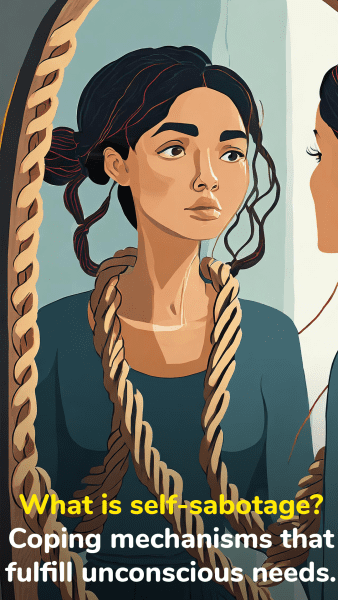
Self-sabotage isn’t just us getting in our own way for no reason. It’s actually about fulfilling an unconscious need. This is where it gets really interesting.
For example, the influential psychologist Carl Jung suffered from fainting spells as a child. Over time, he realized the fainting was actually his unconscious mind’s best way of coping with an environment he disliked. It helped him get out of classes he found dreadfully boring.
Self-sabotage is like your brain’s sneaky method of meeting needs you don’t even know you have. Basically, what psychologists may call a coping mechanism. But these behaviors are a Band-Aid, not a real solution.
Where does self-sabotage come from?
- Irrational fears, like believing you’re not smart enough or attractive enough.
- Negative associations, like you might unconsciously avoid financial success because you associate it with being a bad person.
- The scary unknown, that represents a loss of control and safety.
- False beliefs, that we’ve picked up over the years, like believing we’re destined to live a certain way because that’s all we’ve ever known.
Now, breaking free from this cycle isn’t about fluffy affirmations or superficial self-love – those often represent a form of denial. It’s about facing ourselves, just as we are, taking full accountability.
The most important act of self-love is acknowledging that we’re not happy with where we are and deciding to do something about it. That means getting real about how we self-sabotage ourselves and starting to dig into the unconscious roots of our problems, so we can finally grow.
And where do you start? Right where you are, even if it’s rock bottom. Because sometimes, hitting the lowest point is what it takes to realize you never want to be there again.
The path to change is uncomfortable, scary, and it might even make you unhappy at first. But Brianna West says: trust me, it’s worth it. You’re about to embark on a journey of radical change that will cost you your old life but give you a brand new, fulfilling one in return. Think of it as trading in a clunky old car for a shiny new one.
This transformative journey is deeply echoed in the teachings of “The Four Agreements” by Don Miguel Ruiz, particularly with the first agreement in that book: “Be impeccable with your word.” It’s about directing our energy not towards judging and blaming ourselves, but towards truth and love for ourselves. We can take responsibility for our actions, while maintaining impeccable self love with the inner words we say to ourselves.
In "The Mountain is You," the primary cause of self-sabotage is .
Lack of motivation
Poor self image
Unconscious needs
Negative circumstances
🧠 2. Signs of Self-Sabotage: Breaking the cycle of self-sabotage by identifying and understanding common signs
Self-sabotage is a tricky beast. It’s like that one relative who shows up uninvited to every family gathering – you don’t always recognize it at first, but it definitely makes its presence known. Brianna Wiest in “The Mountain is You” highlights some common signs of this unwelcome guest. Let’s add some real-life examples to make these signs crystal clear:

- Resistance: Picture this: you have a killer business idea, but instead of working on it, you suddenly realize that your entire house needs cleaning. Like, right now. That’s classic self-sabotage. You’re not lazy; you’re caught in a tug-of-war between your ambition and your fear of failure. (By the way, the classic book for overcoming resistance in creative work is The War of Art by Steven Pressfield.)
- Hitting Your Upper Limit: You just got a big promotion, but instead of celebrating, you feel like an imposter in a business suit and start slacking off at work. It’s like your brain is saying, “I don’t deserve this success,” so you unconsciously sabotage it to return to familiar territory.
- Uprooting Often: If you find yourself constantly changing jobs or relationships every time things get a bit serious, that’s a sign. It’s not about seeking better opportunities; it’s about avoiding deeper issues like fear of commitment or facing your own vulnerabilities.
- Perfectionism: Writing that book but stuck on chapter one for the fifth year, because it’s never good enough? That’s perfectionism in action – the fear of being less than perfect paralyzing your progress.
- Emotional Processing Challenges: Struggling to express how you feel after a tough day at work and instead snapping at loved ones? That’s a classic example. A key step here is acknowledging and validating your feelings, recognizing that your emotions and reactions are understandable and human.
- Justification and Excuses: You always plan to start a healthy diet but then end up saying, “I’ll start next week.” Brianna Wiest says the trick here is to shift focus from excuses to small actions. Start by doing one positive thing for your health daily, like swapping one soda for water.
- Disorganization: Your desk is a mess, and so is your schedule and your life. Why? Because chaos often manifests from the inside out. But we can flip that around, by organizing our outer environment we’ll start to feel more like who we want to be inside.
- Frequent Judging of Others: Ever find yourself criticizing others for their choices or success? This often stems from our own insecurities. Down the road, it can create barriers to your own success.
- Toxic Pride or Ego: You messed up a project at work but refuse to ask for help or admit your mistake. This pride can be a form of self-sabotage, as it prevents growth and learning from errors.
- The Illusion of Busyness: If you’re always in motion, a good question to ask is: are you genuinely busy or just running from yourself? Simplifying your life and setting clear boundaries can help us focus on what truly matters.
- Hanging Out With Negative People: You constantly feel drained after hanging out with certain friends. Another way we can subtly sabotage ourselves. Remember, the right people should energize you, not deplete you.
- Fixating on Improbable Fears: You’re always concerned about unlikely scenarios, like a plane crash. These fears can be placeholders for real concerns you’re not addressing, like a fear of losing control.
- A Strongly Negative Focus: Constantly thinking about the things you want to avoid in life can actually draw you closer to them.
- Avoiding Uncomfortable Realities: Like avoiding looking at your bank statements because you’re scared of the reality of your debt.
- Valuing Appearances Over Feelings: You’re more concerned about looking successful on social media than actually feeling fulfilled in your real life.
Recognizing these signs is just the start. The real work comes in understanding the deeper reasons behind your actions and aligning your behaviors with your true goals. Self-sabotage is a sneaky enemy, but with awareness and effort, we can identify it, understand it, and move towards a more fulfilling life.
A related book is The Untethered Soul by Michael A. Singer. He gives us an important hint on how to watch for these signs: “To attain true inner freedom, you must be able to objectively watch your problems instead of being lost in them.”
Read our summary: The Untethered Soul (coming in the future)
In the context of this book, what does validating your emotions primarily involve? It involves .
Changing negativity
Acknowledging feelings
Blaming others
Ignoring discomfort
🌊 3. Change and Homeostasis: Understanding our brain’s resistance to change, even when it is positive
You know how it feels when you’re all cozy, but you have to make yourself get out of bed and step out into a chilly room? Of course, you don’t want to do it. You get that inner feeling called resistance. That’s basically what any kind of change feels like.

Our bodies and minds are big fans of stability, always trying to keep things in a comfortable zone. It’s called the ‘homeostatic impulse.’ For example, your body has an ‘inner thermometer’ that is always trying to maintain a stable temperature. In the same way, Brianna Wiest says our minds try to maintain a stable inner state, by regulating our focus, thoughts, etc.
Even when change is good, we feel an adjustment shock. Why? Because change, no matter how positive, is like a shock to our system. Change is stressful, plain and simple, and our bodies and minds are programmed to resist stress.
For example, imagine landing a dream job that pays you a lot more money for working less hours. Sounds amazing, right? But even this event, that most would agree is a blessing, would carry a new set of challenges. Suddenly, we’re not just thinking about surviving and paying bills; we have to start thinking about the bigger stuff, like the meaning of life and the quality of our relationships. It’s like getting a new smartphone – exciting but a bit overwhelming as you figure out all the new features.
The big secret to lasting life transformation is microshifts – embracing change in tiny, manageable chunks.
Think about it. Real, lasting change isn’t about those earth-shattering epiphanies. It’s more about the small, everyday choices. Like choosing to take the stairs instead of the elevator. These might seem like teeny tiny steps, but they’re the building blocks of massive transformation. Take this example: If you save $5 every day for 50 years, and invest it with an average annual compound interest rate of 7%, your total investment of $90,000 could grow to approximately $848,527.
And here’s where it gets really interesting. Our minds are antifragile, which means they don’t just need peace and quiet to thrive. They actually need a bit of adversity, some challenges to chew on. It’s like taking your brain to the gym – a little bit of ‘exercise’ makes it stronger. We’re not talking about turning your life upside down, but about stepping out of your comfort zone, bit by bit. That’s where growth happens.
In “Atomic Habits,” James Clear says that habits are like earning compound interest. Good habits may not seem to make a difference today, but if you keep doing them, their benefits can become enormous over time, just like saving a little money each day can grow into a lot with interest. That book says, “It is only when looking back two, five, or perhaps ten years later that the value of good habits and the cost of bad ones becomes strikingly apparent.”
Our bodies and minds resist change, even when it is positive, because change is .
Complex
Unpredictable
Demanding
Stressful
🚦 4. Intuition vs Intrusive Thoughts: Separating gut feelings from fear-driven mental distortions
Have you ever wondered why sometimes your gut feelings mislead you, or why certain unrealistic thoughts keep nagging at you? In “The Mountain is You,” Brianna Wiest dives deep into this conundrum, drawing a line between intuition and intrusive thoughts, and it turns out, our emotions and thoughts are not always the reliable guides we think they are…

Intuition is a “deep down” intelligence. It often feels like it’s coming from our gut – and it is! We have a gut-mind connection involving the vagus nerve and serotonin production. It’s where we get those “gut feelings,” those important emotional messages, that seem to come from our body, but also much deeper than that. More on this a little later…
Intrusive thoughts are less about deep insight and more about falling into mental traps, such as cognitive biases and distortions. These thoughts often lead to unnecessary anxiety because we tend to jump to the worst conclusions without thinking things through completely, triggering a fight-or-flight response.
For example, worrying too much doesn’t really protect us; it just makes us imagine the worst without actually preparing for real challenges. A better approach is to face our fears realistically, knowing that even in tough situations like bankruptcy, we can find a way through – life always goes on.
There are 3 key differences between intuition and intrusive thoughts:
| Intuition | Intrusive Thoughts |
|---|---|
| Rooted in the present | Projecting into the future, like a fortune-teller |
| Inner voice sounds calm | Fearful and panicked |
| Sensible and rational | Jumping to extreme conclusions |
The emotional messages from our intuition start as a whisper, explains Wiest, but if we continue ignoring them, then they turn into a scream. If we fail to interpret these messages, they may get suppressed and later resurface in other parts of our life. That’s when we suffer self-sabotage, trying to avoid certain things that have become triggers for emotions that are painful or uncomfortable.
That’s why it’s so important for us to feel our emotions, making space for them, rather than just “pushing through” them. To help process these emotions, Wiest recommends the technique of writing a letter to your younger self. Take anger, for instance. It’s different from aggression – one’s a healthy emotion, while the other can be destructive. It’s the same with most emotions; they have a healthy expression and a toxic dark version, like embarrassment turning into shame.
While feeling and validating our emotions is important, they shouldn’t always dictate our actions as our feelings are often based on outdated information, irrational beliefs, and faulty interpretations. Taking action, despite our emotions, is often the best way to move our lives forward, create momentum towards a better future.
In the popular related book, Stop Overthinking by Nick Trenton, he says, “Many of us have become habitual overthinkers because it gives us the illusion that we’re doing something about the problem we’re overthinking about.”
(Our summary of Stop Overthinking is coming in the future.)
What is the primary difference between intuition and intrusive thoughts?
Their timing (present vs. future)
Their emotional impact
Their influence on our actions
Their location in the body
💖 5. Emotional Healing: The art of allowing ourselves to feel, then letting go, and moving forward
Ever feel stuck, clinging to the past or old experiences that don’t serve you anymore? “The Mountain is You” by Brianna Wiest offers a roadmap to letting go. It’s all about not forcing change; but building something new and better, little by little.

Some ways of letting go:
- Let yourself fall apart. This is part of the process. It may involve hours of just lying in bed, staring at the ceiling, or crying. At the end of it, you’ll realize that you’re still here. Then you’ll begin feeling ready to move forward.
- Imaginative healing. One psychological trick for releasing old experiences is to use your imagination to visit your younger self in your mind. Offer them comfort and understanding, reassurance that everything will be okay and their feelings are completely human.
- Releasing unrealistic expectations. Healing isn’t about fixing everything; it’s about showing up as you are, with all your imperfections.
- Clearing the path. Understand that what’s not meant for you will not stay, no matter how hard you try to hold onto it – be it a job, person, or place. When it goes, it is actually clearing the path for what will be really yours.
- Build the new, bit by bit. Those past experiences will gradually be let go of, as you take small steps towards a new life. Over time, you will remember it less and less often, as your new life gradually occupies more of your mental space.
Recovering from emotional trauma
Most of us think that trauma doesn’t affect us because we’re still able to function. But during the course of life, we all suffer from emotional traumas. Trauma is a result of us becoming disconnected from a fundamental feeling of safety. It’s recognizing when your body tenses up in situations that trigger past trauma and learning to relax and breathe through these moments.
Some thoughts on emotional trauma:
- Feel to heal. Releasing emotional backlog involves understanding that emotions are physical and often stored in specific parts of our body. Techniques like meditation, breath scanning, and physical movement help in releasing these stuck emotions, allowing us to truly feel and process them.
- A non-linear path. Healing your mind is not a linear process; it’s not like healing a cut on your finger. Emotional healing is hard; it’s about facing yourself with honesty, confronting the dark emotions and mistakes you’ve been avoiding. It’s a journey that requires courage and self-compassion.
- Beyond appearances. Moving forward isn’t about seeking revenge or external validation. It’s about owning your feelings, your heart, and finding approval within yourself. This inner transformation is what truly matters, not the outward appearances or the number of likes on social media.
In essence, “The Mountain is You” teaches us that letting go and healing is a journey of small, meaningful steps. It’s about understanding and working with our emotions, not against them, to emerge as the most powerful versions of ourselves.
The bestselling book on trauma, written by a real medical expert is The Body Keeps the Score by Bessel van der Kolk. He echoes some of the points made in this book, saying “For real change to take place, the body needs to learn that the danger has passed and to live in the reality of the present.” Some specific ways to get back in touch with a feeling of safety include body-based practices like mindfulness, breathing, relaxation, even yoga – as well as more advanced therapeutic methods like EMDR and neurofeedback.
What does Brianna Wiest say about where trauma is stored? Trauma is stored .
In the body
In the mind
As a memory
In the subconscious
🦋 6. Attaining Self-Mastery: Shaping your future life with the help of your most powerful self
Imagine if you could sit down with the future you – the one who’s conquered all the mountains and emerged victorious. Brianna Wiest invites you on this transformative journey, not just to overcome challenges but to evolve into someone who can face any adversity with confidence and grace.

Here are 6 steps for reaching a stage of self-mastery:
- Visualize Your Future Self: Picture this: You’re sitting down, journal in hand, taking deep breaths. As you center yourself, you invite your future self to have a chat. Pay attention to the details – how they dress, their demeanor, the aura of confidence they exude. This isn’t just a fantasy; it’s a roadmap to your potential future. Ask them for guidance, listen to their wisdom, and imagine them handing you the keys to a new life.
- Transform into Your Most Powerful Self: Think about the most empowered version of yourself. What choices would they make in your current situation? How would they respond to the challenges you’re facing? This exercise isn’t just about aspiration; it’s about identifying the actionable steps you need to take to become that version of yourself.
- Adopt Personal Principles: Start shaping your future by defining your principles. These are not just preferences but rules carved from your own experiences and aspirations. For instance, if financial security is your goal, adopt principles like living below your means and investing wisely. Remember, it’s not just about making money; it’s about cultivating habits and mindsets that lead to wealth and stability.
- Master Emotional Control: It’s crucial to distinguish between controlling your emotions and suppressing them. True control means acknowledging your feelings, understanding their origins, and then choosing actions that align with your goals and values. It’s really about controlling your behavior, not your emotions.
- Find Purpose and Enjoy the Present: Your purpose in life is not just about doing; it’s about being. You exist, and that in itself is irreplaceable and impactful. It is important to find a work purpose that is at the intersection of your skills, your interests, and market needs. But don’t forget the most important thing is the present. True contentment lies in appreciating where you are right now, not just where you’re heading.
- Embrace Life’s Little Joys: Life’s richness often lies in its simplest pleasures – a quiet moment with a cup of coffee, the comfort of a good book, the laughter shared with a friend. Embracing these moments is as vital to your journey as conquering your mountains.
In essence, “The Mountain is You” is a guide to not just overcoming life’s challenges but also to building a future where you’re the strongest, most fulfilled version of yourself. It’s about realizing that the journey up the mountain is what shapes you, and what you become in the process is your greatest achievement.
In this section on self-mastery, what does the book say is essential for shaping your future? It involves .
Finding purpose
Accepting change
Imitating success
Visualizing self
- Daily Journaling for Self-Discovery: Commit to writing in a journal every day for a month. Focus on your thoughts and feelings to uncover patterns indicating your deeper needs and fears. Use guiding questions like “What am I really afraid of?” and “What need is this behavior trying to fulfill?”
- Weekly Self-Sabotage Check-In: Set aside time each week to review common self-sabotaging behaviors. Reflect on your actions to identify instances where you might be hindering your progress.
- Implement a Small Daily Change: Start with a simple, manageable change this week. For instance, dedicate 5 minutes each day to mindfulness meditation. This small step can enhance your presence and emotional awareness.
- Regular Thought Analysis: Consistently question your thoughts by asking, “Is this a rational thought or an irrational fear?” Compare your thoughts against known cognitive biases like confirmation bias or catastrophic thinking to differentiate between intuition and intrusive thoughts.
- Embrace Emotional Self-Acceptance: Practice allowing yourself to feel and express emotions without judgment. If needed, seek professional support from a therapist or a support group.
- Future Self Visualization: Regularly envision the most empowered version of yourself who has mastered self-discipline and attained your desired life. Consider how they would handle your current challenges and the advice they might offer.

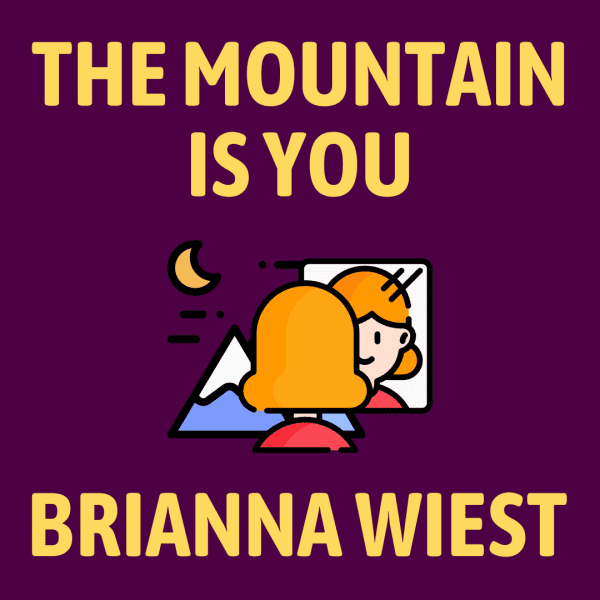

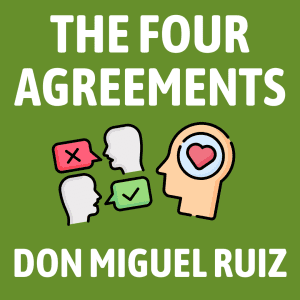

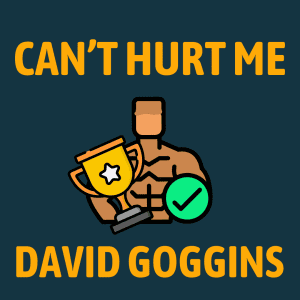
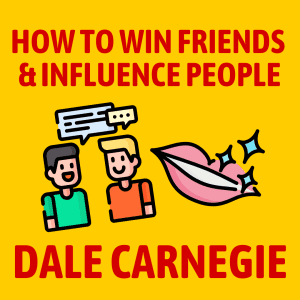

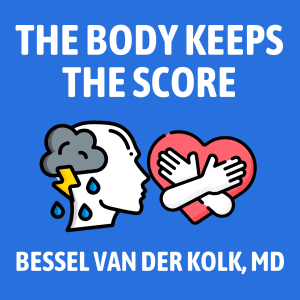
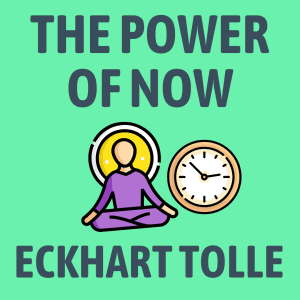
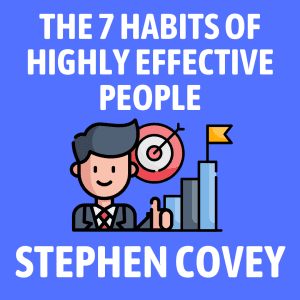
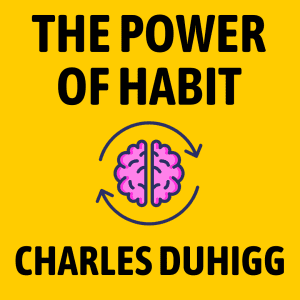


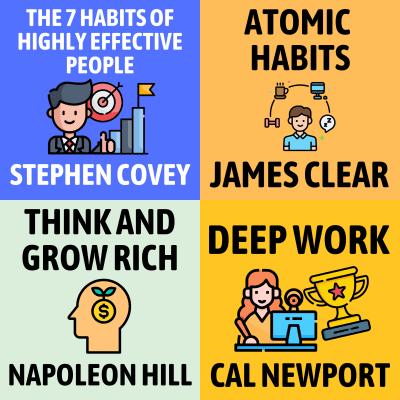
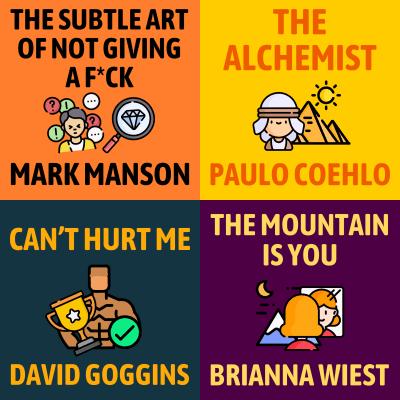
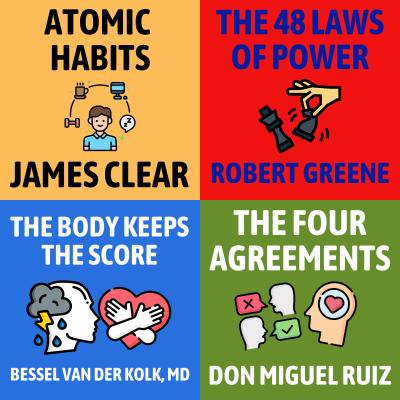

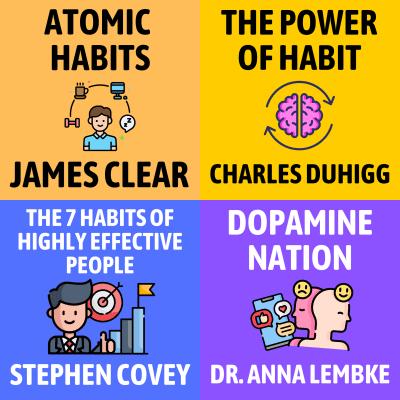
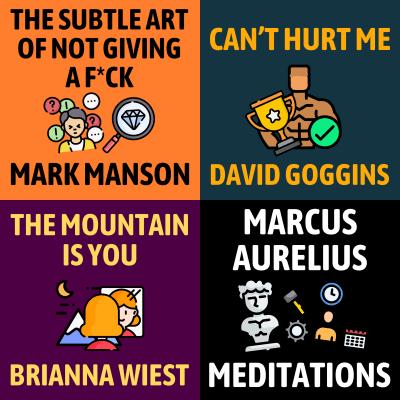
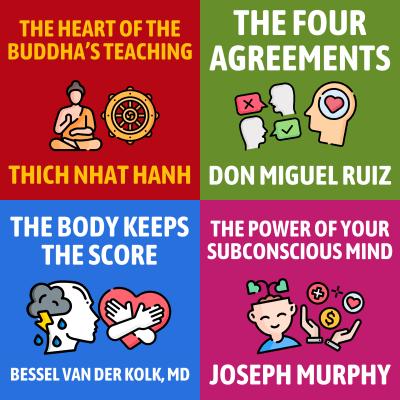











Community Notes